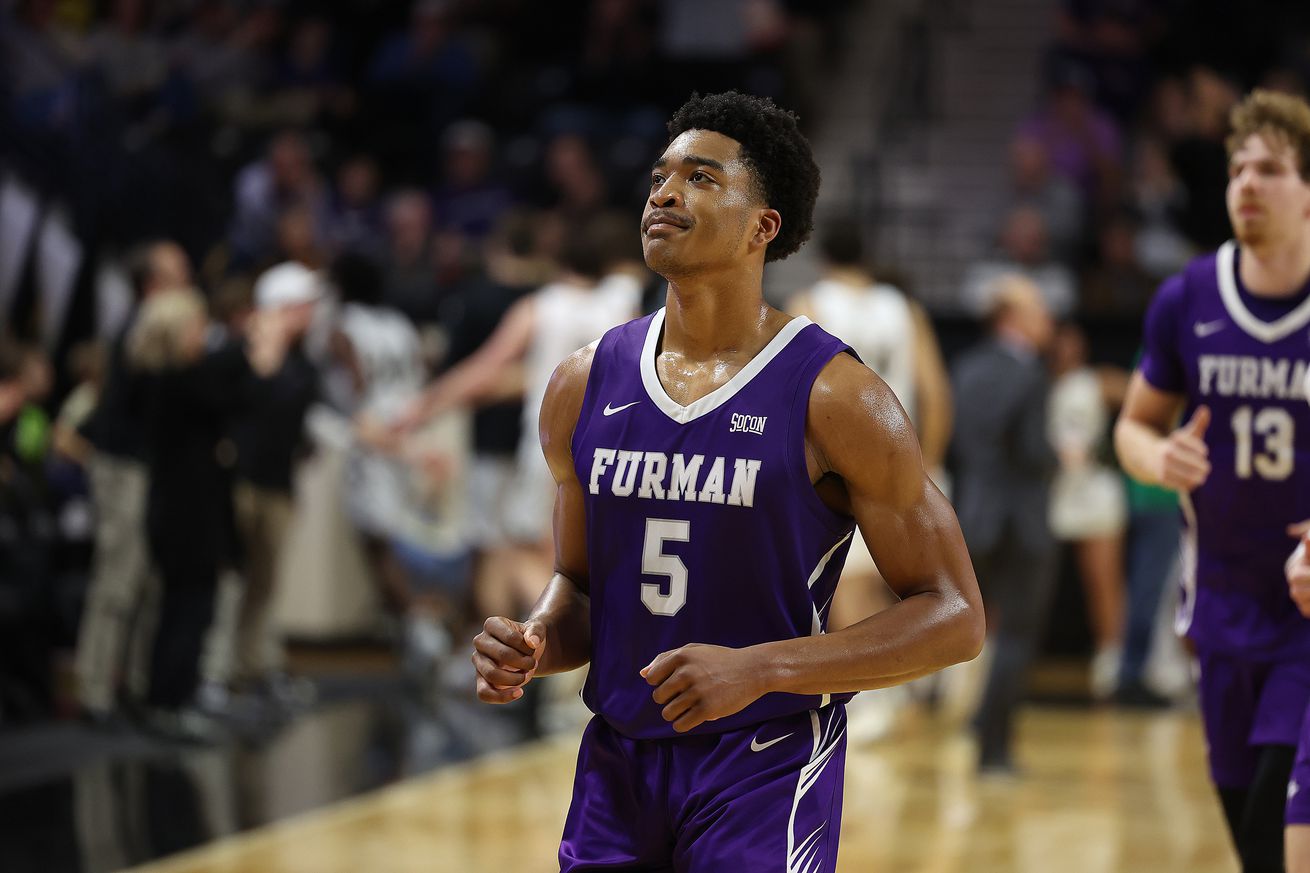
Xavier’s first portal add of the offseason brings a wealth of experience and scoring ability to Cintas.
Since Sean Miller’s return to Xavier, the program has established a track record for taking second team all conference guards from mid major conferences and watching them gain their footing and excel in the Big East. Souley Boum was first team All Big East and honorable mention All American, Quincy Olivari was second in the Big East in scoring and led the conference in three point shooting percentage, and Dayvion McKnight was top 20 in the nation in A:TO ratio and was recently voted to the preseason All Big East teams. In Marcus Foster, one of three second team all conference guards joining the Musketeers this season, Xavier seems to have uncovered another tough, talented player looking for his chance to show what he can do on the big stage.
Foster spent his first 4 years in college at Furman, where he established himself in the rotation as a freshman and went on to start 56 games over his sophomore and junior campaigns. In that time he displayed his ability to be an effective scorer, especially from beyond the arc where he took roughly half his shots and converted at a 36% rate. The other two notable things he showed during those two seasons was that he is fairly averse to pulling up once he puts the ball on the floor, only shooting 12% of his shots in the midrange over that time, and that he uses his 6’5” frame effectively at both ends of the floor, converting well at the rim for a guard and averaging 5.1 rebounds per game.
Last season was somewhat of a mixed bag for Foster. His averages went up to an impressive 17.0/7.5/1.8 and he garnered both second team All SOCON and All SOCON Tournament team nods. The drawback on all this was that his three point shooting percentage dropped from 36% over the previous two seasons to 30% and his offensive efficiency rating dropped by 5 points according to both Kenpom and Barttorvik. There were a couple of factors at play in these numbers that indicate that Foster did not, in fact, forget how to shoot a basketball. First of all, his usage rate skyrocketed as he took on a more important role in the offense with the departure of Mike Bothwell and Jalen Slawson. This meant he was shooting more, but having to be less selective about his shots. His excellent free throw percentage and rate stayed fairly consistent with his career numbers to that point, which is a good indicator. The other factor at play was a knee injury which cost him 9 games from early December to mid January. One can point to the even more dramatic drop Quincy Olivari took when battling injuries during his Junior year at Rice and see the result of a guy who was able to get back to being himself and eventually garner fantastic results at Xavier.
Foster is a guard who can shoot the ball from the outside and score at the rim, but also brings a knack for rebounding, especially at the defensive end where he was top 75 in the country in rate last season. As always, it is hard to project how a guard who is making the move from a mid major to a high major will cope on the defensive end, but his DRTG, admittedly an inelegant measure of defensive prowess, of 104.1 last season is in keeping with McKnight’s 103.3 and Olivari’s 107.3 in their final seasons before coming to Xavier. It is also worth noting that Foster started Xavier’s exhibition versus Dayton and posted 15/2/3 with a couple of steals on 6-10/1-4/2-3 shooting and a +/- of 18, just one off of Dante Maddox’s game best 19. For Xavier to get back to where they want to be, they have to replace the production of Quincy Olivari and Des Claude and Foster seems primed to play a key role in doing that.